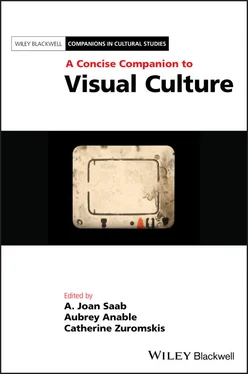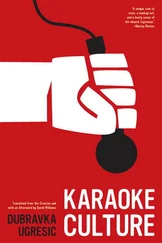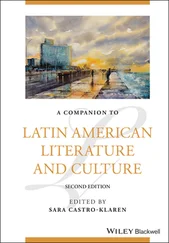And here we run almost immediately into confusion, the infinite regress of the archive, for the subject who, with his grid‐creating glance, takes in the archive’s contents is also himself a mass of material and psychological remains. Arrayed around the subject, the self, the most immediate archive is that of the mind—the junk heap of thoughts, sensations, memories, dreams and imaginings that we fundamentally are and that we attempt to interpret as though it were an obscure text composed by someone else. The respectable distance between the historian as subject and the object of her study, the past carefully arrayed before her, is an illusion. She comprises both the archive’s limit, that which stands outside looking in, and its ontological center, the consciousness around which it has come into being.
The German novelist W. G. Sebald illustrates this idea beautifully when the eponymous character of his book Austerlitz , a historian of architecture, stands gazing into a junk shop window in the Czech town where his mother had been interned during the Holocaust. “It was a long time before I could tear myself away from staring at the hundreds of different objects, my forehead pressed against the cold window, as if one of them or their relationship to each other must provide an unequivocal answer to the many questions I found it impossible to ask in my mind” (Sebald 2001, 195). The junk shop is, like the mind, a collection of overdetermined remnants, randomly ending up in the psyche, each a token of memory or trauma. Among the shop’s inventory (presumably the material remains of middle‐class Jewish lives destroyed by war), Sebald lists a white lace tablecloth, cut‐glass bowls, ceramic vases, earthenware jugs, a tin advertising sign, a box of seashells, globe‐shaped paperweights, a model ship, pale linens, a Russian officer’s uniform and cap, a fishing rod, a hunter’s bag, a Japanese fan, a painted lampshade, and a taxidermy squirrel (195–6). When Austerlitz describes “these ornaments, utensils, and mementoes” as “stranded in the Terezín bazaar, objects that for reasons one could never know had outlived their former owners and survived the process of destruction,” he is describing both the material and psychological archive (197). For, upon seeing the stuffed squirrel, the Czech word veverka (squirrel) leaps to his mind—a word in a forgotten language from his obliterated childhood. With this revelation, the reader understands that the glass through which Austerlitz peers is as much a mirror as it is a window, that he himself is the consignment shop of the past. It is the subject who gives meaning to the word, just as he does to the strange object to which it is attached, in relation to the archive’s accumulated contents. The essayist and psychoanalyst Adam Phillips (2001, 1) declares: “All psychoanalyses are about mess and meaning, and the link between them.”
Linking the dig, the archive, and the mind, Wilhelm Jensen’s messy novel Gradiva , published in 1902, about which Sigmund Freud and Jacques Derrida both write, describes a German archaeologist who is fixated on seeking the trace of a footstep in the ashes of Pompeii (Derrida 1998). The main character, Norbert Hanold, encounters a beautiful marble bas‐relief at a museum in Rome that depicts a young Greek maiden carved in profile, captured in midstride as she walks, her robes draped gracefully behind her. The inspiration for this fictional work of art is a real Roman stone relief copy of a fourth‐century Greek work showing the Horae—a work that is now in the collection of the Chiaramonti Museum in the Vatican. Naming the maiden Gradiva (the woman who walks), Hanold is captivated. He obtains a plaster cast of the sculpture as a token of his enchanting encounter and as a fetish of the elusive creature. Increasingly obsessed by the figure, who visits him in his dreams and fantasies, he goes to Pompeii to find her. There she appears to him, but he does not know whether she is real, a figment, or an apparition. Nearly mad with longing and uncertainty, he seeks some evidence of her, some material trace. The footprint is a figure for memory and desire; it is buried in layers of consciousness as obscure as ash, sifting down like dust, which makes it the perfect image of the psychoanalyst’s art.
The grid‐creating glance, the order‐imposing subject, the archaeologist, historian, or psychoanalyst who constitutes the archive’s exterior limit (and the interior logic around which it is arrayed) swoons at the abyss of its contents. Enormous rooms full of paper, mountains of waste and garbage, or fine layers of dust: the heavy thingness of the archive suffocates and threatens, making the topic ripe for affect theorists and new materialists (Appadurai 1986; Bennett 2010; Brown 2001; Massumi 2002, 2010). Such scholars attempt to understand what Martin Heidegger describes as the “thingness of things” and Jane Bennett famously calls the vibrancy, the vitality of matter. “By ‘vitality,’” she writes, “I mean the capacity of things—edibles, commodities, storms, metals—not only to impede or block the will and designs of humans but also to act as quasi agents or forces with trajectories, propensities, or tendencies of their own” (Bennett 2010, viii; see also Heidegger 1967, 8). The matter in the archive, the stuff deposited there elicits illness and fever, produces fear and perverse forms of avarice.
One thinks of Charles Dickens’s Golden Dustman, Mr. Boffin, who delights in tales of great misers and whose vast “estate” consists of towering mounds of ash and broken crockery harvested and piled up from the grates and dustbins of London, which he strangely hoards like gold (Dickens 1998 [1865]). The poet Theodore Roethke (1975, 44) describes a more modern version of dust’s vitality in his short lyric poem “Dolor” where he writes: “I have seen dust from the walls of institutions,/ Finer than flour, alive, more dangerous than silica,/ Sift, almost invisible, through long afternoons of tedium,/ Dropping a fine film on nails and delicate eyebrows,/ Glazing the pale hair, the duplicate grey standard faces.” Here the omnipresent and unceasing dust mortifies and slowly, silently buries its victims. As if disturbed by gazing at Man Ray’s eerie photograph Dust Breeding ( Duchamp’s Large Glass with Dust Motes ) from 1920, which records a year’s worth of dust accumulated on Marcel Duchamp’s Large Glass ( Figure 7.1), historian Carolyn Steedman writes of her suffocating experience in the archive: “You think, in the delirium: it was their dust that I breathed in” (Steedman 2002, 19). The downward‐falling, ever‐accumulating dust attends the archive—coating every object, drifting over every artifact—and is itself an archive of pollen, dirt, and epithelial cells.

Figure 7.1 Man Ray, Dust Breeding ( Duchamp’s Large Glass with Dust Motes ), 1920.
© Man Ray 2015 Trust /Artists Rights Society (ARS), NY / ADAGP, Paris.
No wonder the archive’s mood is haunting and fearful, like the panicked music Maurice Jarre composed for Alain Resnais’s 1956 quasi‐documentary Toute la mémoire du monde ( All the World’s Memory ). The short black‐and‐white film, shot at the Bibliothèque Nationale de France in Paris, opens on piles of books, newspapers, magazines, manuscripts, and journals moldering in the library’s dimly lit attics and storage rooms. As the camera pans across and makes its way through these piles, as though it were backing slowly out of an asylum, a large rectangular microphone hung on a cord suddenly drops into view. “Faced by these bulging repositories,” a voice‐over (as though spoken into the microphone) remarks in French, “one fears being engulfed by this mass of words.” “I have known the inexorable sadness of pencils,” Roethke (1975, 44) sighs. “Neat in their boxes, dolor of pad and paper weight,/ All the misery of manila folders and mucilage.”
Читать дальше













